Working with fish of any kind can be a challenge if you are not used to the intricate bone structure or reliable methods of preparing the food for different dishes. Learning how to fillet a larger trout is going to be different than working with scallops. It all comes down to the types of tools you have available and your comfort level. That is why we have put together this quick overview of the differences between a fillet and a boning knife. We have excellent buying guides and suggestions for the best fillet knives and best boning knives that you should check out when you are ready to make a purchase. In the meantime, let’s get into the differences between these two blades.
What is a Boning Knife?
A boning knife is designed to work around bones. This does not have to be with fish. There are many other types of meat like beef, ribs, lamb, chicken, and more that require a sharp point and narrow blade to get through the different pieces of cartilage and ligaments.
What is a Fillet Knife?
A fillet knife is designed to carefully cut different-sized pieces of fish around scales and bones. They tend to be longer and have incredibly sharp edges, so you can let the blade do most of the work while you carefully navigate the edge through the ingredients. You want to use a fillet knife to ensure you are not leaving behind annoying bones that get stuck in your mouth when eating.
How to Choose a Boning Knife and a Fillet Knife
There are a number of different considerations when picking out a boning or fillet knife. We actually put together an excellent fillet knife buying guide as well as a boning knife buying guide that goes into great detail for both of the blades. However, we should cover the basics here so you can get a better idea of the type of blade you really need.
What are the Differences Between a Boning Knife and a Fillet Knife?
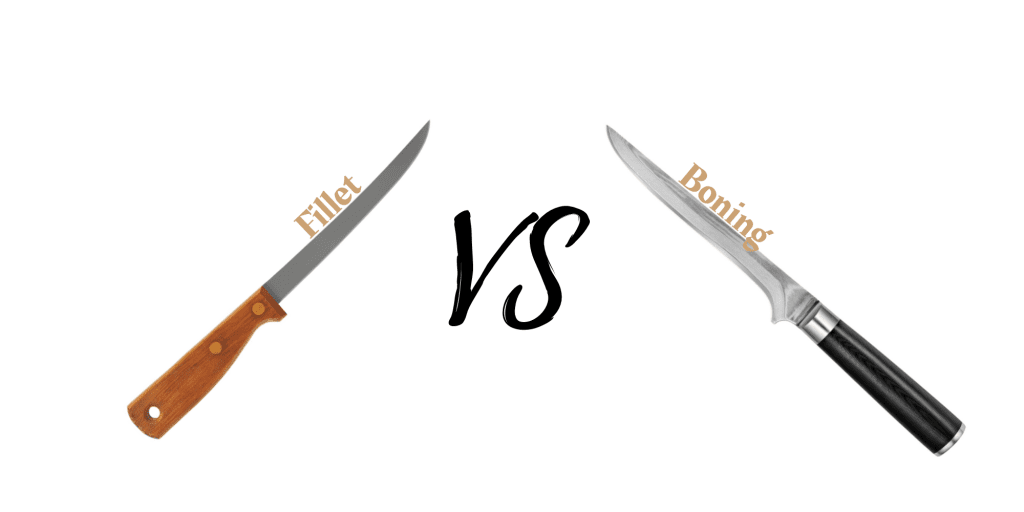
A boning knife is going to be made from a harder material than a fillet knife because you are working with thicker pieces of meat besides fish. You can use a boning knife for fish, but a fillet knife will have more flexibility to get around smaller bones than a boning knife. Fish are also thinner in meat than land animals, so you want a fillet knife to expertly slice small segments of fish for each meal.
What Do Boning and Fillet Knives Look Like?
A fillet knife tends to be thinner and more flexible in order to move around the meat on a fish. They are frequently taken on fishing trips, which means their overall length has to be portable enough to wear on a hip and the handle needs to withstand frequent water exposure. A boning knife is about 5 to 8 inches in length and has a stiff narrow blade. They can be either arched or straight but do not have the flexibility of a fillet knife.
What are the Blades used for?
Both can be used for fish, but a boning knife is better for larger land animal meat, and a fillet knife is more designed for seafood.
Fillet Knife | Boning Knife |
|---|---|
Price
Well-made fillet knives will cost anywhere from $28-$158, depending on the materials being used and the ability of the blade to hold its sharpness over time. A boning knife has an even wider range of prices, from $20-$200. Again, this depends on the overall type of materials and the ability of the blade to maintain durability over time.
Length
You want to find a fillet knife that is anywhere from 6-9 inches, with a 7.5-inch blade being the best length for the average user. That gives you plenty of space to work with most store-bought or fresh-caught fish. If you are catching larger seafood, you’ll need to up the size of your blade. A boning knife can be a bit shorter, somewhere between 5-8 inches. The shorter the blade, the more control, but you need to balance out the size of the animal you are working with as well.
Weight
This will vary depending on the materials you are using and the amount of stress you are putting on your wrist. A boning blade works with heavier land animals, so you want something with a bit of heft to it, probably between 5-10 ounces. A fillet knife needs to be lightweight, so you get the dexterity to work with fish. Shoot for something in the 2.5-6.8oz range.
Type of Blade
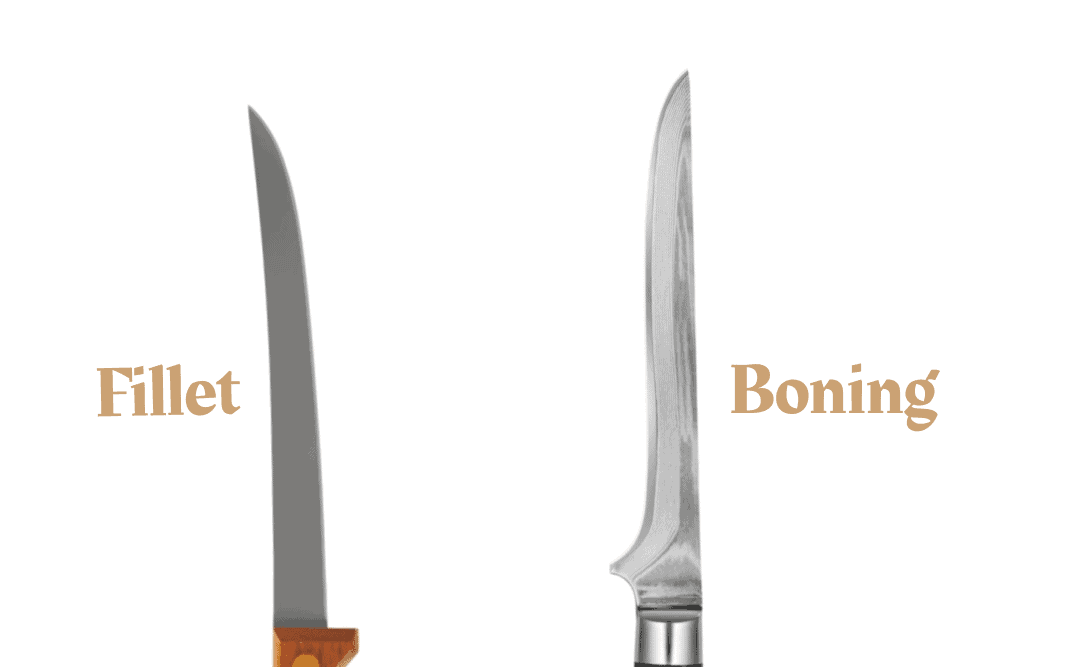
You can find both fillet knives and boning knives in stamped and forged versions. This means the blade has been treated to some form of creation. A forged blade is usually done by hand or one blade at a time, using a unique piece of metal for each knife. A stamped blade tends to be made by a predesigned pattern that is then cut out of large sheets of metal by a machine. Forged blades are what most collectors and professionals prefer because, in general, they tend to be stronger and more durable. That also means they are far more expensive than a stamped blade.
Blade Flexibility
Fillet knives are all about flexibility. You have to get around softer fish bones that can ruin a meal if not carefully removed. You want some flexibility in boning knives, but not as much because the sinew and ligaments of a land animal are easier to work around.
Blade Width/Thickness
Most fillet knives are going to be pretty thin at around 2.5-3.5mm. Anything thicker than that will make it harder to work with a fish, and anything thinner will be challenging to keep sharp. The best thickness for a boning blade with 3/32 inches, which gives you enough girth to work with larger meats while still being maneuverable around bones.
Tang
Tang is important to both blades because you are working with dexterity. If your blade snaps into two pieces halfway through a fillet, you’re going to be in trouble. The sharpness of both of these blades is dangerous. Stick to full tang if you can. If you do a partial tang, make sure it is from a reputable company, so you stay safe.
Handle
There are two key aspects of the handle for both of these blades – durability and grip. You need a handle material that you can grip easily and will not slip out of your fingers because you are working with meats and sharp blades. You also want a hilt that can be cleaned easily from all the materials you are using. You do not want any leftover ingredients sticking to the handle and causing bacteria growth.
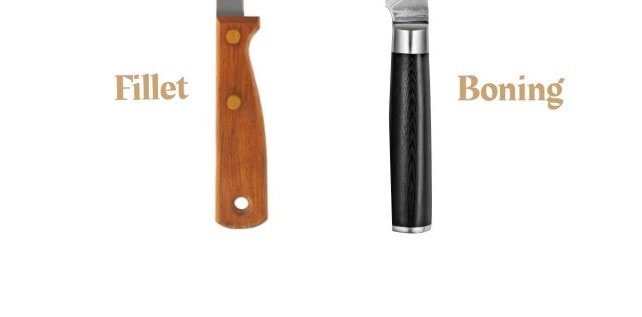
Balance
Agility and precision are critical attributes of boning and filleting knives. The best way to get those aspects is with a balanced blade. You can tell if your blade is well balanced by placing the bolster (the point between hilt and blade) on your finger and balancing it like a seesaw. For a fillet knife, a slight dip towards the hilt is okay because you want lightweight. For the boning knife, the more balanced, the better.
Maintenance
In both cases, you are working with blades that get used for meat. That means you want to keep them sharp and clean between uses. That requires honing the blades with long steel and handwashing them before completely drying off and storing them in a safe space. If you have a sheath for the fillet knife, use it. You do not want little hands to get a hold of these blades. Unless you are working with a plastic hilt and a stamped blade, you should not put either a boning or fillet knife in a dishwasher.
FAQ
Are both knives used just in the kitchen?
Actually, no, you will see many outdoor enthusiasts and those who love fishing with a fillet knife strapped to their belts in a sheath for quick cleaning. Most boning blades are kept in a kitchen.
Which knife should I buy?
This will depend on the type of food you are preparing. If you work with a lot of seafood, you will want a fillet knife. If you work with a lot of land animals, you will want a boning knife. Our suggestion is to get one of each.
Can I carve a turkey with a boning knife?
Technically yes, but you are far better served with a carving knife or Chef’s knife to get the turkey just the way you like it for family meals.
Can I use a fillet knife on vegetables and fruit?
Yes, in fact, many chefs prefer a fillet knife for making those incredible designs and colorful platters you see on competition shows. However, we should caution you that fillet knives are incredibly sharp, and you need to be careful when making intricate cuts that expose your fingers.
Can these knives get wet?
Yes, both boning and fillet knives are frequently used with meat and will be exposed to water and liquids more often than not. The key to ensuring their longevity is to carefully hand wash, hand dry, and then store them in a safe space so the water does not lead to rust damage.
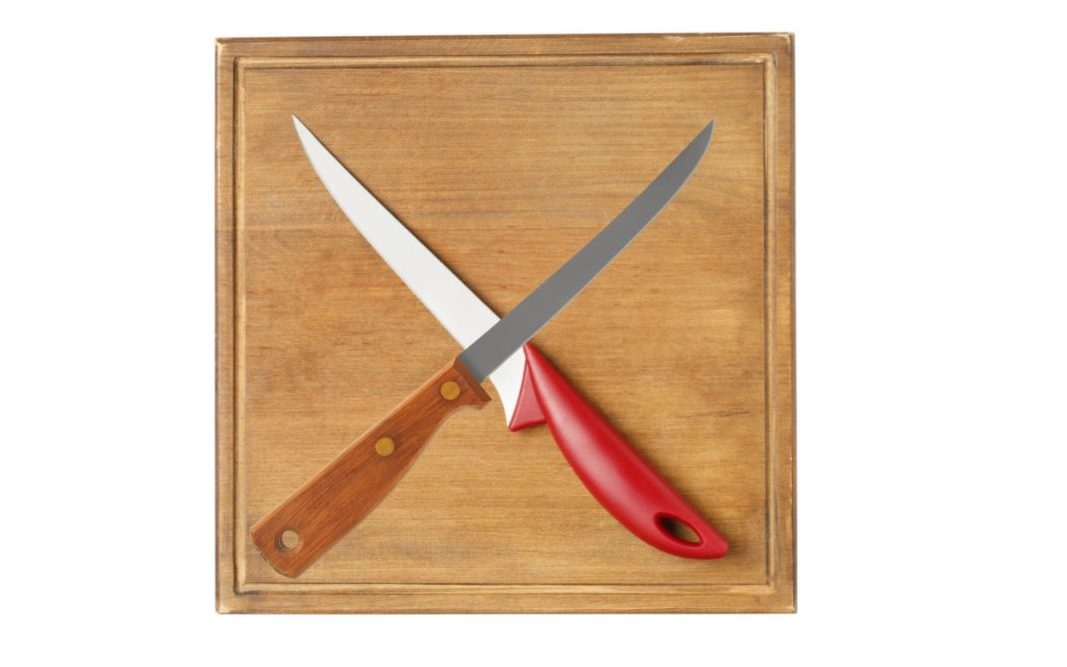
Conclusion
We hope this article on the differences between a fillet knife and a boning knife has been eye-opening for your next buying decision. The major differences are going to be the flexibility, difference in blade length, and the way you are using the blades. Always stick to those knives you are most comfortable with using. That way, you lessen any chance of being hurt while still getting the fantastic food you and your family love the most. Happy cooking!

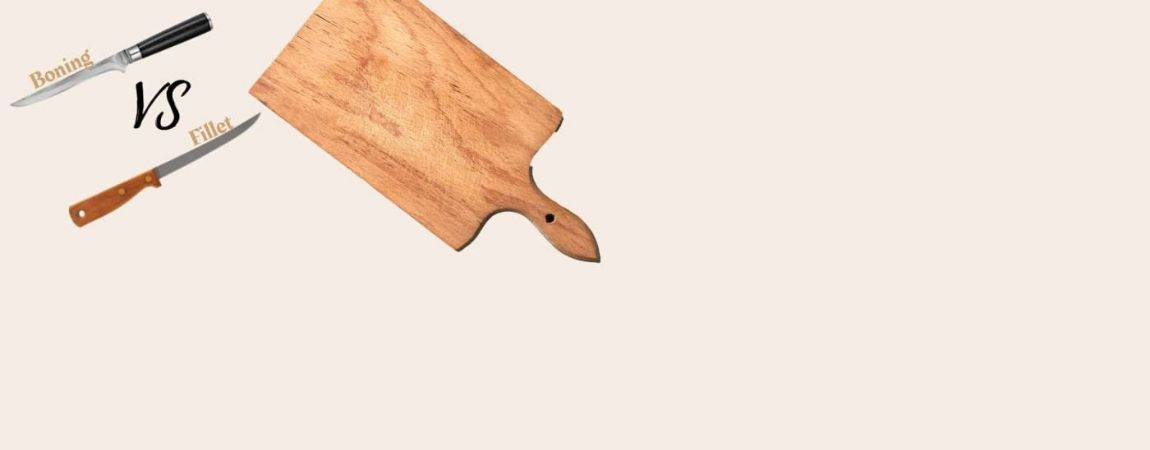


Post Your Thoughts